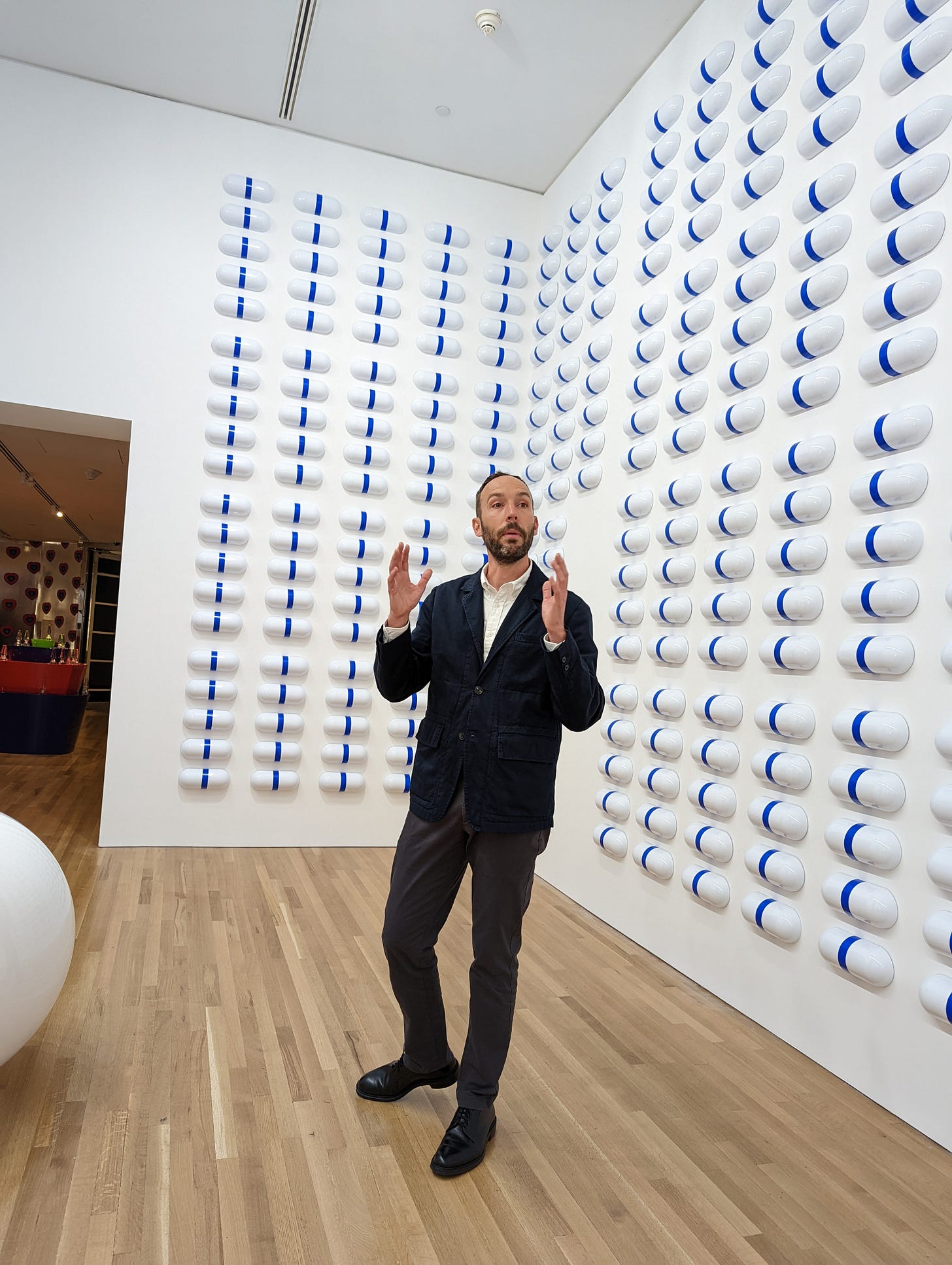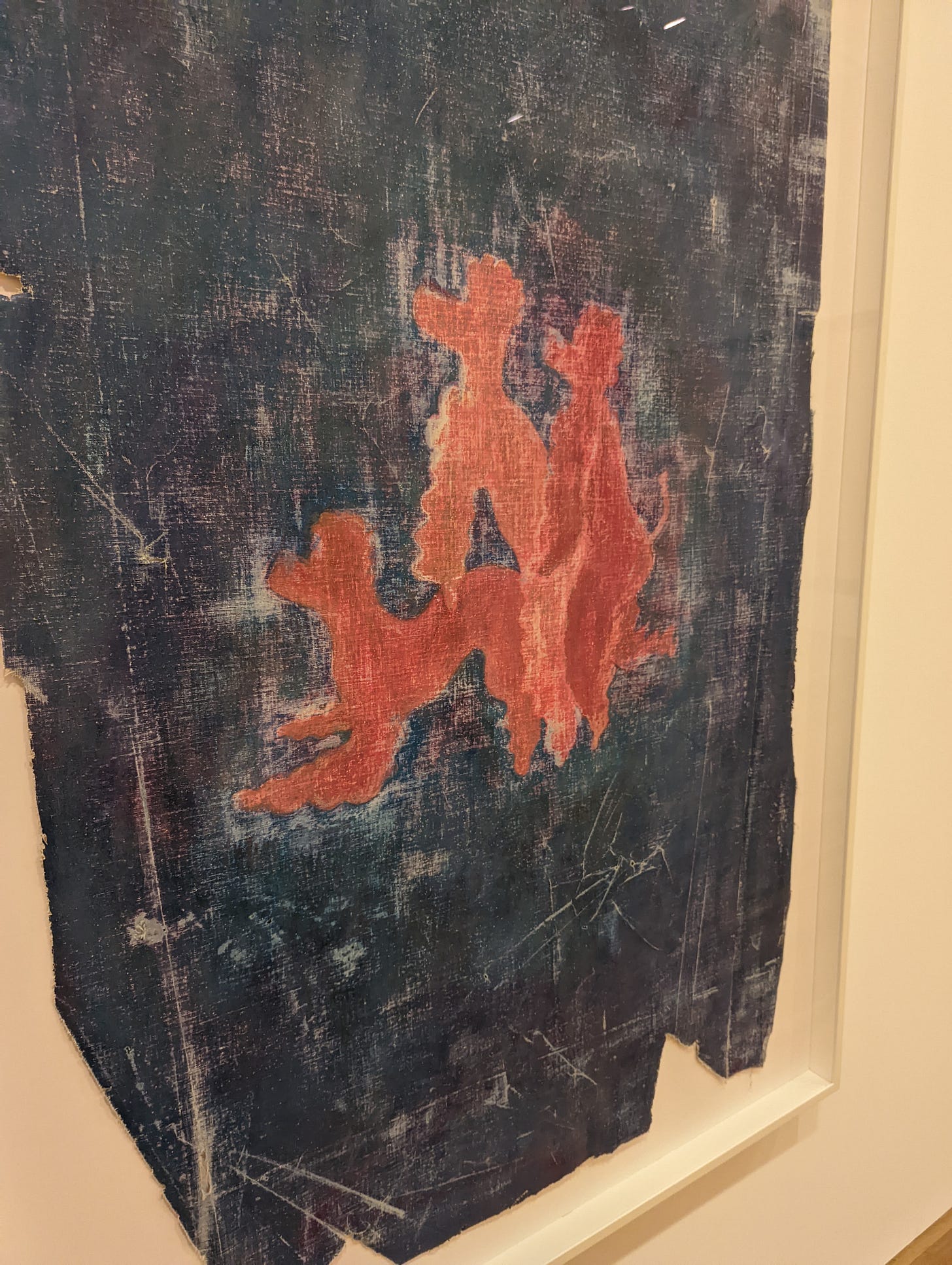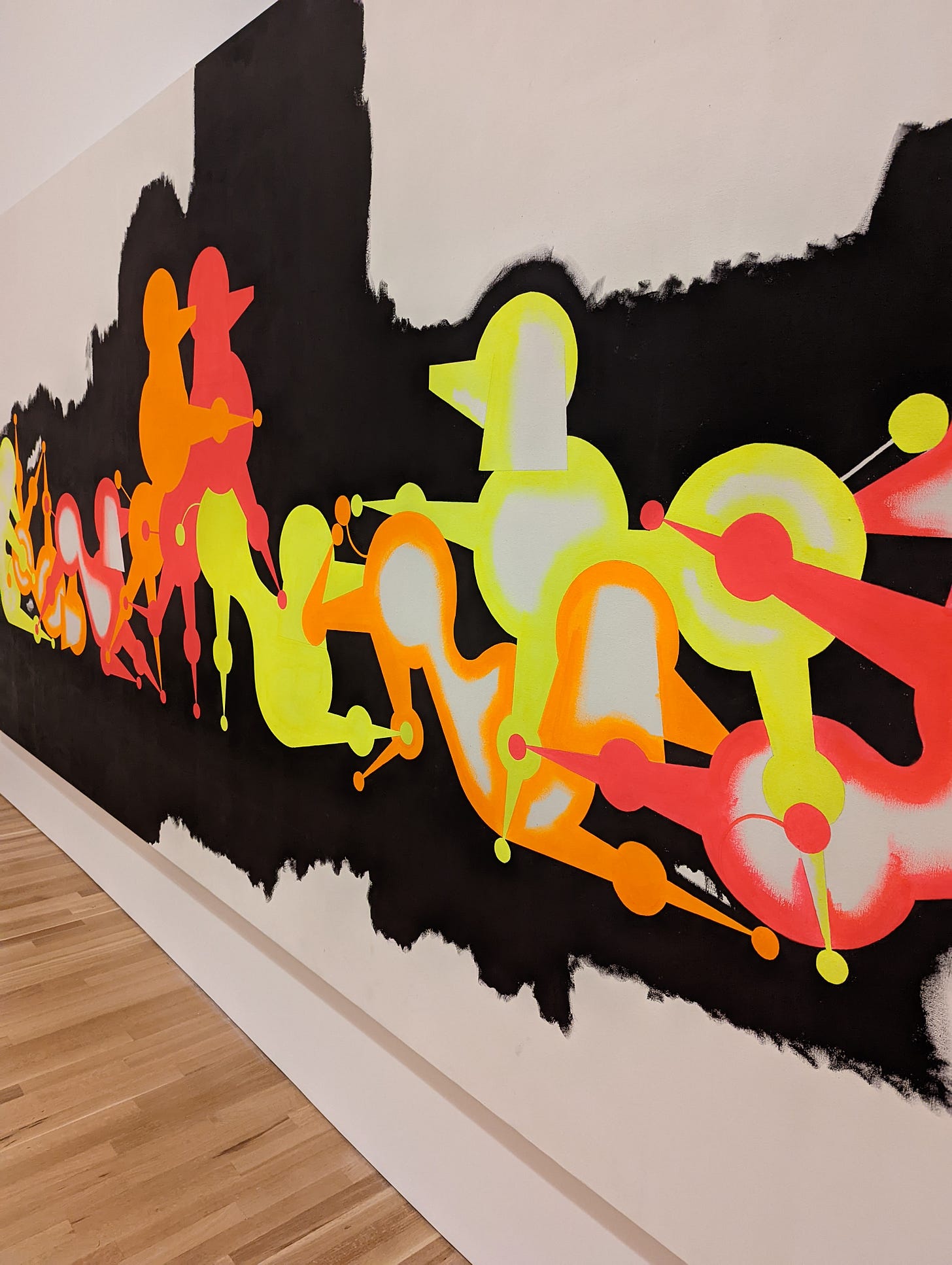Ottawa gets the General Idea
Three artists who conquered the world finally conquer home
Hours after I attended the press preview for the General Idea retrospective at the National Gallery of Canada, I couldn’t get the seals out of my head.
Fin de siècle, the 1990 installation that fills a room at the Gallery with Styrofoam sheets, fluorescent light and three stuffed fake baby seals, is one of more than 200 works from the Toronto arts collective that constitute the Gallery’s big summer show and, the pandemic being what it’s been, essentially its comeback. It’s a gutsy move, which I’d attribute to the Gallery’s director Sasha Suda, except that the development pipelines for major gallery shows are so long that a General Idea retrospective has been in the works for longer than she’s had the gig. Probably there’d be a General Idea show about now anyway. Perhaps not one this big, in the dead of summer, in the Gallery’s largest exhibition space.
Gutsy: perhaps one in 50 of my readers was already excited about the big General Idea retrospective. Another 49 will need some explanations. Some of those 49 will run out of interest before I get done explaining. Here goes.
General Idea was a Toronto queer arts collective whose conceptual, often satirical art asked serious questions, in often hilarious fashion, about consumer culture, social norms, justice, fairness and, in a few legendary instances, the precise nature of a truly memorable night out. The trio — Jorge Zontal, Felix Partz, AA Bronson — came together in 1969; took a couple years to decide there were three of them; got named General Idea when a newspaper writer mistook the name of one of their artworks for the name of the group; and made absolutely as much trouble as they could until Zontal and Partz died of complications from AIDS in 1994. In the nature of things, they became a bigger deal in New York and Europe than in Canada. This summer’s exhibition is very much a case of Canada catching up to the world in evaluating three of its own. Adam Welch, the exhibition’s curator and the Gallery’s Associate Curator of Canadian Art, told reporters the idea for this show took root in conversations he had with Bronson at the last major General Idea retrospective — in Mexico City, six years ago. Here’s Welch talking to reporters in one of the show’s room-sized installations, One Year of AZT, which, for anyone who lived through or covered the AIDS pandemic in North America in the 1990s, is sadly self-explanatory:
I had a general idea of General Idea from several talks with Suda’s predecessor, Marc Mayer, who’d point out the trio’s works to me during several visits. But their blend of whimsy, dead seriousness, and conscious myth-making was something I only dimly grasped. This retrospective, accompanied by a doorstop of a catalogue, helps explain to latecomers what the fuss was about.
Those seals, for instance. By 1990 the Newfoundland seal hunt had been the object of years of high-profile protests, often by visiting celebrities. The AIDS crisis was, by then, coming off a decade of often cruel neglect, when news organizations and politicians were sometimes reluctant even to admit that thousands of people were dying. Fin de siècle asks a simple question: would we get more attention and sympathy if we were seal pups?
Any time you see three of something in a General Idea piece, it’s a reference to the artist. In one room I found some exuberant poodles:
Looking around, I realized I was surrounded by exuberant poodles:
There’s a room devoted to the Miss General Idea Pageant of 1971, a faux beauty pageant designed as a satire on consumer culture, a manufactured event designed to mock manufactured events. The event was held at the Art Gallery of Ontario. I asked AA Bronson what it was like to storm such a castle of high culture. “Everybody had a great time,” he said. The Rosedale matrons who thought it was another night out at the AGO mingling with the hippies from Ward’s Island, an early site of Pride events in the very first years after homosexuality was decriminalized. “The two audiences, so unlike each other, were all sitting together.” One of my favourite parts of the story is that General Idea announced the 1971 pageant was too arduous to organize, so they wouldn’t have another one until 1984. And then they spent the intervening 13 years issuing periodic updates, in their art magazine FILE, on preparations for the big 1984 pageant. Which never happened. The 1984 “Miss General Idea Pavilion” burned to the ground, an easy event to manage because it had never existed. The first poodle painting above was reported to have been found in the wreckage. So one question General Idea explored for more than a decade was, which news can you trust? A prescient question.
Of course the coverage General Idea received at the time was sometimes deeply irritated. Back at the office, I looked up some stories from the 1970s. James Purdie, writing in the Globe and Mail in 1975, was not a fan. “Still plugging away at its three-man revolution, crusade, purge or whatever else it may be,” he wrote. Sure, they’d been “given space” at the AGO, Purdie wrote, but “until they begin to discipline themselves they remain mere conceptualists, tinkerers in search of an art.”
They never did worry too much about discipline. It worked out all right nonetheless. Here’s Bronson, who came from his longtime home in Berlin to attend the opening:
I asked him whether it felt like a big and hard decision to pursue a career as part of a trio rather than as a solo artist. Not really, he said. “I don’t know that it was such a big decision then. It would be a bigger decision now. I mean, there wasn’t much at stake. The Canadian art world barely existed. Even in general, in the international art world, the chances of making money for making art were pretty much zero. It was more for the pleasure of doing it.”
General Idea moved to New York in 1986. “We had kind of run out of possibilities here. Most of the major museums at that point had one piece, and it was clear they weren’t going to buy another piece for 15 or 20 years.” In New York there were more collectors. In Europe, “they saw the idea of three men working together as a political and social statement… we traveled non-stop through Europe for many years in Italy, and Austria, and Belgium, and the UK.”
Canada eventually came around. “It is that Canadian thing,” Bronson said. “You want to see your artists celebrated elsewhere first, in case you’ve made a mistake.”
The National Gallery show is a chance to catch up to what audiences elsewhere figured out sooner. It’s big, colourful, often funny, often tragic. It’s high modernism with a wink, and if it pretty spectacularly doesn’t deliver on a mandate to deliver pretty paintings to tourists, well, the Canada and Impressionism exhibition down the hall delivers pretty paintings in spades and will run for another month. Besides, even in summer, even tourists deserve something serious to think about. This exhibition is the sort of thing a national art gallery should be doing. I’ll be going back, probably more than once.









Paul [please pardon the familiarity but your writing causes me to think that I know you personally], I am one of 49 but I am also the 1 who read the whole column. And enjoyed it.
I was unaware of General Idea until your column. I say that with no apology as the art world has never been my major preoccupation. Well, except....
I was during my working life an accountant and I had many, many artists as clients and I would from time to time speak at the local art college to students about "the business side of being an artist." My first question of a potential new artist client was to ask them to describe their medium and, I can say quite honestly, I was and remain surprised by the many, many media and interpretations of those media.
[For example,
Me: "What is your medium?"
Artist: "Plywood." [complete deadpan voice}
Me: "Excuse me?"
Artist: "Plywood." [same deadpan voice]
Me: "Oh, okay."
It turns out that that fellow was quite serious - if not fully descriptive - and his work was held in numerous collections and he was a teacher and administrator at the art college.]
So, the art world was not my major preoccupation but I became intrigued by the many artistic ideas; some of those ideas I understood and they even appealed to me whereas other ideas left me cold. I broadened my horizons - well, a little; I am, after all an accountant (albeit retired) - and I have to say that I am critical of art from time to time, as is any philistine, but I am also highly interested in it.
So, all of this, Mr. Wells, is by way of saying that I enjoyed your column immensely and this is part of why I purchased a subscription as soon as I heard about your new venture. Keep it up, along with your "more regular" columnar work.
Around 1980 I got a job behind the bar at The Fiesta, a very trendy diner turned restaurant on Yonge Street across from the main branch of the Toronto Public Library. The owners mounted several pieces by General Idea on its walls, including their infamous "Nazi Milk" photo (the young man in the pic was also a line cook at The Fiesta). The owners were also, along with GI, co-publishers of FILE magazine, a satire on LIFE magazine and the locus of all things 1984 Miss General Idea Contest. Next door was their main gallery in Toronto (I believe it was the Goddard Gallery) which is where I first encountered their Poodle phase.
Not surprisingly, General Idea were often at the restaurant. AA and Felix would grab a booth with the restaurant's owners but Jorge Zontal always came to the bar and almost always ordered a double espresso with a twist of lemon peel. He was courteous but fairly quiet. I remember talking to him about his life in Venezuela; most times he would have to talk to hangers on. I enjoyed his company.
Two of my closest friends died of AIDS the same year Jorge did. It was a shitty year.
Oh, and one quibble: the members of General Idea were openly gay and their art reflected that, but to call the collective "queer" - while a fashionable label these days - would be totally inaccurate.
Thanks Paul. Great profile of these visionary artists.